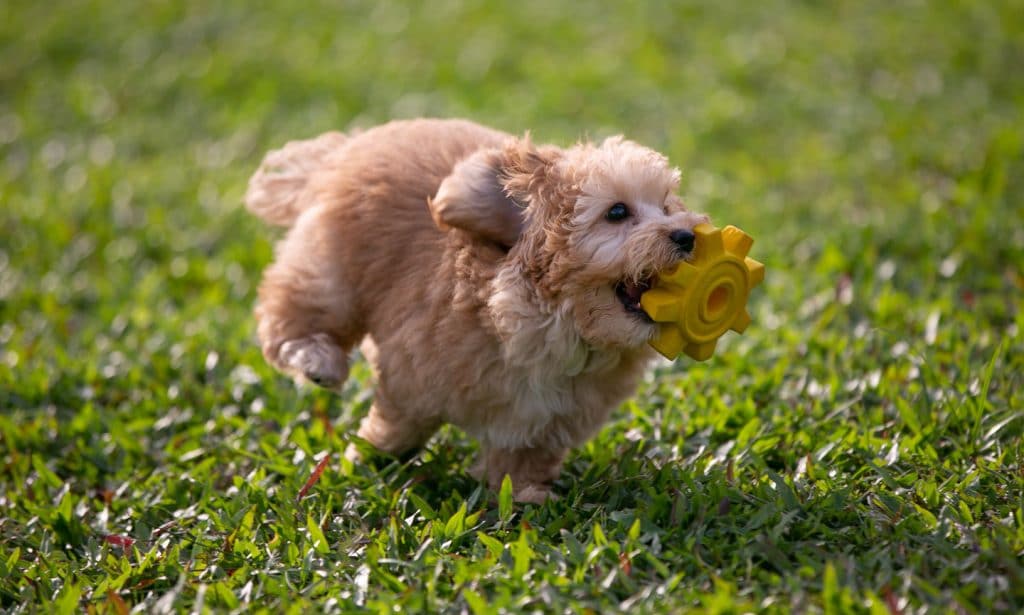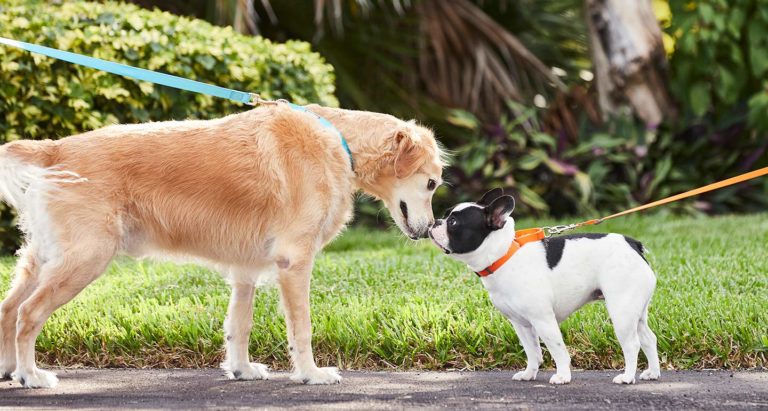Every dog parent has experienced it: that moment when your dog suddenly decides to go on a sprinting spree. Your mild-mannered pup is replaced by a high-octane speed racer who runs around the home, darting back and forth, and, it seems, having a great time. Most pet parents refer to these crazy bursts of energy as “dog zoomies.”
Why do dogs get zoomies and is it a cause for concern? For the most part a dog having zoomies is a completely normal—and highly entertaining—part of life with a dog. But dog zoomies can cause problems if the fits happen at a less than ideal time, say when your pup is off leash or in the same room as your precious china collection.
Here’s what you need to know about dog zoomies.
@sapphie_the_pomsky Just another day of my morning ZOOMIES 😂🐶 #queenofzoomies #doglover #dogs #happydog #fyp ♬ original sound - Sapphie the Pomsky
The Lowdown on Dog Zoomies
Dog zoomies are also known as Frenetic Random Activity Periods, or FRAPS, which is almost as cool a name as dog zoomies.
“FRAPs are a totally normal release of pent up energy,” says Dr. Rachel Barrack of New York City’s Animal Acupuncture. An episode of this canine behavior is typically described as a wild run that seemingly comes out of nowhere and lasts for a few minutes at most. Some dogs mix in a few play bows—crouching on their front legs with their rear extended—between sprints.
A dog having zoomies is like a wind-up toy that was wound to the max, says Dr. Jill Sackman, DVM, DACVB, owner of Animal Behavior Consultants of Michigan, who points out the importance of looking at what was going on beforehand. “Wild energy with running can have a lot of different instigators,” she says. ”I think most people would see it as a playful and positive energy, but evaluate it situationally.”
Causes of Dog Zoomies
So why do dogs get the zoomies? While it’s not known exactly why dogs get zoomies, experts have theorized a number of common reasons:
- Excitement. “They can happen anytime a pooch is very excited,” says Los Angeles-based veterinarian Dr. Patrick Mahaney, including when a pet parent comes home after a long period away, when a new canine or human friend comes over, or after an event like a visit to the dog park, or a trip to the veterinarian or groomer.
- Peer Pressure. “Sometimes they can be triggered by watching other pets, children, or people engage in high-energy, playful behavior,” says Dr. Barrack.
- Stress Relief. Dog zoomies are both a physical and mental action, and are often a way to relieve stress, says Dr. Sackman. If a dog has put up with a less than desirable experience—such as bath time, a vet visit or a day alone with minimal stimulation—FRAPs provide a way for that dog to expend nervous energy and get some relief.
- Excess Energy. A buildup of energy, accumulated and then let go in one big rush is another likely cause. Dr. Sackman compares it to something many humans can relate to. “It’s like a little kid who is excited to finally be let out of school.”
Types of Dogs Who Get Zoomies
Vets tend to agree: Dog zoomies can occur in dogs of almost any age, and in most dog breeds.
Very young puppies, those only a few weeks old, might not exhibit them because their bodies haven’t fully developed the skills and strength to run around wildly, says Dr. Mahaney. Adults and seniors can get dog zoomies provided they are healthy enough to have that kind of energy.
Which means, in a way, dog zoomies could be a sign your dog is feeling happy and healthy. “I’ve never seen a dog that is severely ill exhibit such behavior,” says Dr. Mahaney.
How to Avoid Dog Zoomies Dangers
While a case of the zoomies is usually a sign your pup is in a good mood, if those bursts of energy happen at the wrong time or place they could put your dog—and your belongings—in potential danger. But, don’t despair, try these veterinarian recommended tips:
- Avoid stairs and slippery areas. Keep zooming dogs away from stairs and elevated areas, says Dr. Mahaney. If you can, herd them away from slick surfaces, like hardwood floors or tile, and onto something with more traction, like carpet or a grassy surface, so they are less likely to fall and hurt themselves.
- Steer clear of roads. When a dog is experiencing the zoomies, it’s crucial to keep them away from the road. That’s especially key if the sudden burst of energy happens during a walk or playtime at the dog park.
- Refrain from a chase. If the fits hit while you’re outside, try to resist the temptation to pursue your dog, says Dr. Sackman—it will only make them think it’s a game. Instead, try to call them back to you with a treat or a dog toy. When they’re close enough, try to slip on the leash.
- Run in the opposite direction. If your pup won’t come when you call, run in a different direction. Your frisky friend is likely to chase you, says Dr. Sackman.
How to Help Dogs with the Zoomies
While most of the time FRAPs or dog zoomies are nothing to worry about, there are some actions you can take if these bouts of energy happen too frequently or tend to get out of hand. For instance, if you think dog zoomies might be due to anxiety, you can try to help your dog by getting ahead of the problem. Pay attention to what happened just before the dog behavior started. Supplements such as Dr. Lyon’s Calming Aid dog supplement can also help promote calm behavior.
If your pet seems to be letting off steam due to not getting enough exercise, “try to recognize his patterns so you can encourage a healthy release of energy with a long walk, run, or a brisk game of fetch,” says Dr. Barrack. If your dog's energy levels remain high and the behavior continues to be a problem, it may be helpful to consult a dog trainer.
Dog Zoomies FAQs
Q:
When do dog zoomies stop?
Q:
Do senior dogs get the zoomies?
Q:
Why do dogs get the zoomies after a walk?
Q:
Why do dogs get the zoomies after a bath?
A:
Your dog may get zoomies after a bath for several reasons:
- Needing Relief. They may need a release after having to be still in the water for a time.
- Drying. There’s nothing like a bit of running in circles to help dry off a little faster.
- Getting the smell off. Let’s face it, rolling around in the grass might be the best thing our canine friends can think of as a way to get rid of those unfamiliar soap and shampoo smells.
Q:
How can I stop dog zoomies?
A:
Use both physical and mental stimulation.
- Get that dog moving. Plenty of exercise can help tire out your four-legged friend. Try a long walk every day, or find a safe area where they can enjoy some off-leash running.
- Stimulate their mind. Engage your dog’s brain with a treat dispensing toy or puzzle game since mental challenges are a great way for your pup to get that nervous energy out.
Bottom line: Don’t fret next time your dog starts running in circles after a walk, or gets a sudden burst of energy post-bath. Be sure to evaluate what happened just before, and keep your pet—and your furniture—safe. And while there are many possible triggers, remember, more likely than not, it’s normal, just a typical case of the dog zoomies.
Looking for ways to exercise your pet? Try these 15-minute games for dogs.
More Tips for High-Energy Dogs
Share:









